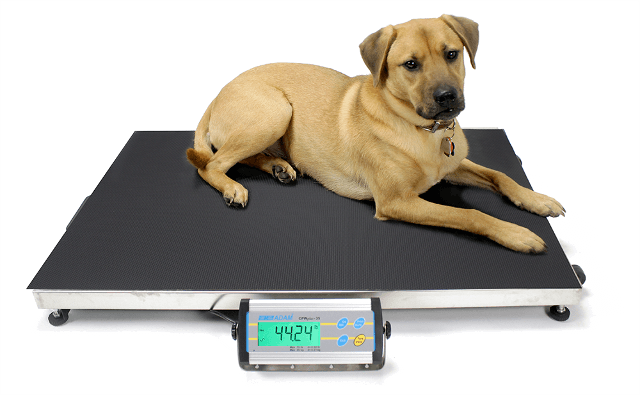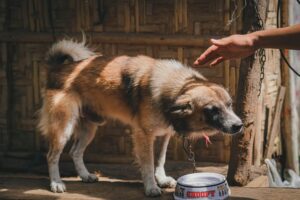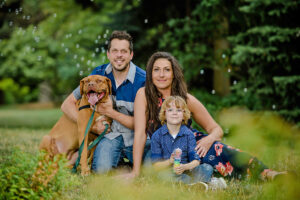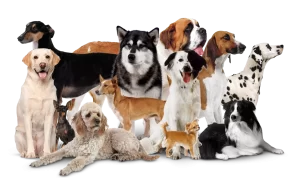Maintaining a healthy weight is fundamental to the dog’s overall health and longevity. Obesity in dogs is becoming an increasingly widespread malady, resulting in any number of serious health problems including diabetes, joint problems, and heart disease. As a responsible pet owner, you should learn about healthy feeding habits and properly control your dog’s weight. Complete Dog Guide to Practical Tips, Strategies, and Balanced Diet – for your furry friend to be healthy and happy.
Table of Contents
ToggleThe Important Role of Dog Weight Management
Why does your dog’s weight matter?
1. Health Risks: Overweight dogs are more likely to experience various associated health issues, including arthritis, diabetes, heart disease, and cancers.
2. Quality of Life: Excess weight can minimize your dog’s activities and energy, meaning less playtime and more time spent indoors.
3. Longevity: A healthy weight for your dog may result in his living as long as the circumstances associated with his breeding, diet, and health allow.
What is a Healthy Weight for a Dog?
To know whether your dog is at a healthy weight, consider these:
– Body Condition Score (BCS): A scale from 1 to 9 which will allow you to assess the amount of body fat your dog has. Normally, the score is supposed to be between 4 to 5.
Rib Check: The ribs should not be sticking out when you are locating them by feeling the side of your dog. They can be accessed without feeling any resistance.
Waistline: Viewed from above, your dog should have a well-defined waistline with the abdomen sucked in.
If you are in doubt about the weight of your dog, let your vet make a professional assessment.
Healthy Feeding Behaviors
1. Pick the Right Food
The starting point to healthy feeding behaviors is picking high-quality dog food. Here’s what to look for:
– Read Labels: Look for foods that meet the AAFCO (Association of American Feed Control Officials) standards for your dog’s life stage (puppy, adult, senior).
– High Protein and Fiber: High protein and fiber content in the food can make your dog eat less, avoid overfeeding and not over-eat.
– Limited Use of Fillers: Use as few fillers as possible like corn, soy, and artificial additives; instead, use only the finest whole ingredients.
2. Portion Control
Portion control is another aspect by which you will be controlling the weight of your dog properly. There are a few strategies regarding this:
– Stick to Feeding Guidelines: Look at feeding guidelines included in dog food but don’t forget that they are general recommendations. Apply it based on your dog’s activity level and weight.
– Use measuring cups: Always measure food for your dog using a proper measuring cup so you don’t overfeed him.
– Split Meals: Instead of a big meal, feed your dog two or more smaller meals. This keeps the energy levels steady and reduces the dog’s hunger in between meals.
3. Control Treat Intake
Treating is the largest source of calories in your dog’s diet. Here is how you should control it properly:
– Choose Healthy Treats: Low-calorie, nutrient-dense treats can be carrots, green beans, or an excellent-quality commercial diet manufactured specifically for weight loss.
– Keep the Number of Treats Low: The treats should only amount to about 10 percent of what your dog consumes during the day. Pay attention to the number of treats you give and consider withholding one of his regular meals to balance out calorie intake so he can eat the treats.
– Use Treats Judiciously: Instead of using calorie-laden treats for your dog, you can break up your dog’s regular food into little pieces to give out when training.
4. Handle Human Food with Care
Many pet owners feel that dishing out a little human food to their dogs doesn’t hurt. Don’t get me wrong; an occasional table scrap probably will not hurt, but it might lead to excessive weight gain. Here’s how to handle human food with care.
Perform the following
-Foods containing high levels of fat, sugar, or salt should be avoided. Some toxic treats to treat with your dog include chocolate, onions, grapes, and avocados.
Healthy Choices: Only share fruits and vegetables safe for dogs, only moderately, and staple foods like apples, without seeds, blueberries, and sweet potatoes.
– Be Mindful of Portions: If you do feed your dog human food, be sure to not go over the recommended amount of calories.
5. Keep Fresh Water Available
Dehydration itself will not reduce your pet’s appetite. However, sometimes it can help balance hunger and thirst if your dog becomes dehydrated. Your dog should always have fresh water available. If your dog has had a diet or feeding change, he should remain hydrated to avoid gastrointestinal upset.
Encourage Exercise
To regulate a dog’s weight, exercise and diet must go hand in hand. Here are some tips on how to keep your dog active:
1. Establish Daily Exercise Routine
Based on the age, breed, and energy level of your dog, establish a daily exercise routine. This may include:
– Walking: You must walk your dog at least for 30 minutes every day. Depending on the dog’s fitness level, you would have to change this schedule.
– Playtime: Engage your dog in play with his or her interactive toys, balls, frisbees, and so on. This will keep him or her active both mentally and physically.
– Dog Parks: Visit the dog parks that guarantee safety for your dog, hence enabling him or her to interact and run around freely. That way, your dog can expend plenty of energy.
End
– Puzzle Toys: Incur puzzle feeder such that your dog has to solve some challenges in order to get its food or treats.
– Training Sessions: Training sessions are one of the most effective mediums for reinforcing good behavior and keeping your dog mentally exercised.
3. Set Realistic Goals
A realistic goal also needs to be set for the management of your dog’s weight. Gradual loss of weight is safer than rapid loss and also sustainable. Set an average weight loss target of 1% to 2% within a week of your dog’s body weight. Checking weight regularly is one of the ways to track the progress.
When to See Your Veterinarian
If the above measures still do not succeed in controlling your dog’s weight, consult your veterinarian and he shall aid in finding some of the root causes. Then, that veterinarian can provide you with specific advice as well as prescription weight management diets or medications.
Maintaining Healthy Dog Weight for Long-Term Success
Healthy weight maintenance is a lifetime process. Some additional tips to help guide you through this process include the following:
1. Regular Check-Ups
It is very important to schedule regular veterinary check-ups for your dog. That would be an excellent opportunity for the veterinarian to counsel you on diet and exercise change if that is necessary.
2. Knowledge
Be enlightened about your breed and its specific needs. Different breeds have a higher tendency towards obesity than others do. Knowing about your dog’s predilection will better allow you to help manage its weight.
3. Social Network
Know your support network: family, friends, or resources in your life. Make sure they also stay posted about your progress so they can constantly help you make your dog healthier.
Share your goals with family and friends in order to create a supportive atmosphere for your dog. A network of people will keep you motivated and accountable towards your goals.
4. Keep a Journal
A journal of your dog’s food intake, exercise routines, and weight progress might provide insight into identifying patterns and allow quick adjustments if needed.
Maintaining your dog’s weight is essential to their health, happiness, and longevity. This is done through feeding habits, exercise routines, and open communication with the veterinarian in charge.
A healthy dog is a happy dog. Achieving and maintaining a healthy weight by your furry friend will depend little on effort, dedication, and love in ensuring that it enjoys a long, active, and fulfilling life.
For more similar info:
https://www.webmd.com › Healthy Pets › Healthy Dogs
































